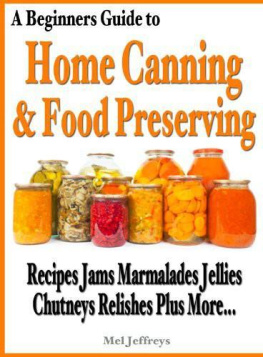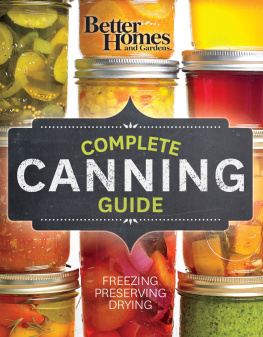
Introduction
The Garrison Keillor quote on the previous page comes from a March 15, 1997, performance of A Prairie Home Companion performed in Muncie, Indiana. Keillor was playing to his audience with his monologue titled, Ball Jars. Muncie is home to the canning icon, Ball Corporation. As he is known to do in his monologues, Keillor waxes both philosophical and sentimental on the topic of food preservation. He playfully makes the statement that, in his (mythical) childhood home of Lake Wobegon, Home canning was the basis of a whole social order.
As humorous as his monologue is, there is truth in Keillors words. Home food preservation has been a fundamental human activity until more recent generations, when developed societies migrated to industrialized farming and food preparation. Food preservation is as old as civilization. People have always endeavored to devise safe means to extend the useful life of the food that they have found, grown, caught, or killed. During the nineteenth and early twentieth century, many families enjoyed the benefits of home-grown/raised produce and meat, and they preserved them using a variety of familiar methods including canning, drying, salting, smoking, and, later, freezing. The second half of the twentieth century saw the emergence of mega-grocery stores, food warehouses, convenience foods, fast foods, industrial farming, and the wane of home food preservation. Our busy, dual-income, multitasking families embraced convenience and fast foods, while putting Grandmas canner on a dusty shelf or, more likely, in a tag sale. Times change and so does a societys perspective. As the twenty-first century enters its second decade, economic issues, concern for food safety and nutrition, and a heightened awareness for global environmental concerns are foremost. Many people are revisiting home food preservation for a variety of reasonssome that are consistent with earlier generations, such as economy and wholesome food, and others that are unique to contemporary needs.
But this renaissance poses a number of questions in the minds of the new would-be preservationist. Mom and Grandma arent around to show me how to do this. How can I be sure that Im doing it right? Is it hard? Could I poison my family? Whats the best method: canning, freezing, or drying? Can city-dwellers get into home food preservation? The stream of questions is almost endless, and the good news/bad news is that the stream of answers is, too. How does the neophyte get started without a PhD-level investment in learning?
Breathe easy. As a Wall Street Journal headline once stated, Yes, You Can. Home food preservation is not only possible for the uninitiated, but its also fun! This book is intended to bring together old-school basics and todays need for accurate, easily accessible, and succinct instructions. Ive designed it so that you can quickly get just the information that you need.
Are you new to home food preservation? Concerned about safety, nutrition, and sustainability? Focus on chapters 1 and 2. Youll gain an historical perspective, while reviewing the many benefits of home preservation and learning about food safety and spoilage issues. Youll see that todays home food-preservation techniques go far beyond the Mason jar. Chapter 2 helps you choose home food-preservation methods that best support your objectives in terms of nutrition, ease, and sustainability. Many folks have strong opinions about what method is best. Bottom line: what is best is whatever works for you and your family.
Equipped with information about the scope of food procurement and preservation, you can choose the chapter that gives you specifics about the method youre most interested in. Look at chapters 3 through 6 for details on each of the various preservation methods that we cover: freezing, canning (water bath and pressure), making jellies and jams, and pickling and fermenting. This book offers a concise survey of safe preservation methods along with tasty and convenient recipes. Because sustainability is in the forefront of many peoples minds, I offer tips and options that are eco-friendly.
You will also find handy reference information in the appendix, such as conversion charts, techniques, and more. This book is a great first step into the world of home food preservation, and when youre ready to take bigger steps, you can check out the list of resources Ive compiled for you at the back of the book.
Enjoy the adventure of home food preservation! Its a hobby that easily turns into a lifestyle.

Lead Editor: Jennifer Calvert
Senior Editor: Amy Deputato
Associate Editor: Lindsay Hanks
Art Director: Jerome Callens
Book Project Specialist: Karen Julian
Production Supervisor: Jessica Jaensch
Assistant Production Manager: Tracy Vogtman
Indexer: Melody Englund
Vice President, Chief Content Officer: June Kikuchi
Vice President, Kennel Club Books: Andrew DePrisco
I-5 Press: Jennifer Calvert, Amy Deputato, Lindsay Hanks, Karen Julian, Jarelle S. Stein
Text Copyright 2011 by I-5 Press
Quote on Copyright 1997 Garrison Keillor. Reprinted by permission of Garrison Keillor
Recipes for Kosher Dill Pickles on provided by Jarden Home Brands, marketers of Ball and Kerr fresh preserving products. Jarden Home Brands is a division of Jarden Corporation (NYSE: JAH).
Front Cover Photography: Gina Cioli and Veronique Bos/I-5 Publishing, LLC
Back Cover Photography: psrobin/Flickr
All rights reserved. No part of this book may be reproduced, stored in a retrieval system, or transmitted in any form or by any means, electronic, mechanical, photocopying, recording, or otherwise, without the prior written permission of I-5 Press, except for the inclusion of brief quotations in an acknowledged review.
Library of Congress Cataloging-in-Publication Data
Parente, Jackie Callahan, 1947
Can it! : start canning and preserving today / Jackie Callahan Parente.
p. cm.
Includes bibliographical references and index.
ISBN 978-1-935484-28-8 (pbk.)
eISBN 978-1-620080-10-8
1. Canning and preserving. I. Title.
TX603. P117 2012
641.42--dc23
2011028063
I-5 Press
A Division of I-5 Publishing, LLC
3 Burroughs
Irvine, California 92618
Printed and bound in China
17 16 15 14 13 12 11 1 2 3 4 5 6 7 8 9 10

CHAPTER 1
A Contemporary Perspective
Food preservation has been a part of our human discourse since the dawn of civilization. From the perspective of the twenty-first century, the needs and motives of our ancestors may feel remote. But it is no less true now than it was millennia ago: you are what you eat. What has changed is the society in which we live and the food growing, gathering, processing, and preservation options now available to us. We learned that we could maximize the crop yields through monoculture, chemical fertilizers and pesticides, and industrial-size farming implements. We stopped taking ownership of our food gathering and learned to rely on commercial resources, often under the questionable banner of convenience. Dual-income families with an average of two-and-one-third children who played soccer, tennis, piano, and more didnt have the time to cook a meal let alone consider the possibility of home food preservation. Today, much of our food grows in the cans, bottles, and cello packs that line our grocery shelves. Or even more conveniently, our meals come to us fully prepared through an anonymously staffed drive-through window. Unlike our ancestors, we have many and varied choices regarding how we gather and store our food. Food gathering doesnt need to be delegated to nameless industrial farms and processing plants. If we want, we can take ownership of some or all of this food stewardship. While the degree of urgency may feel different today than it did for other civilizations throughout history, the core values are the same: preserve good, healthy food when its abundant to sustain us during times of scarcity.
Next page
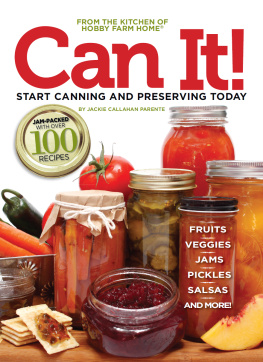

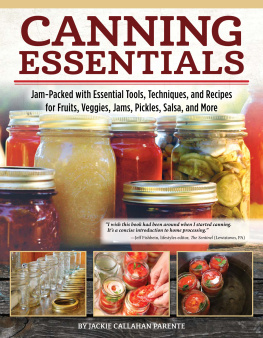
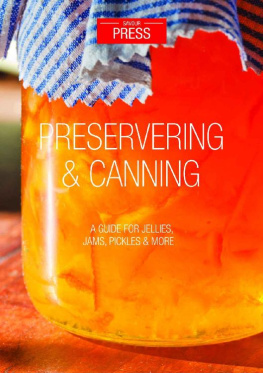

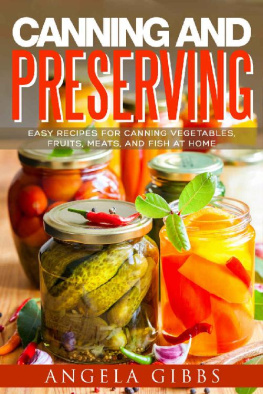
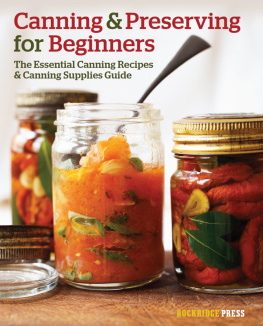
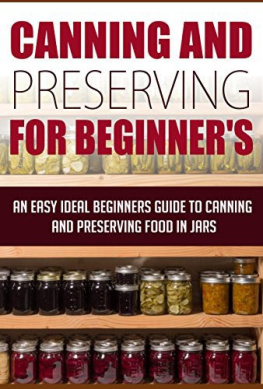
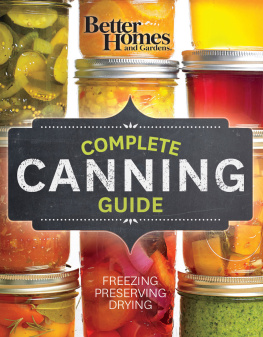
![Better Homes - Better homes and gardens you can can: [a guide to canning, preserving, and pickling]](/uploads/posts/book/188232/thumbs/better-homes-better-homes-and-gardens-you-can.jpg)
